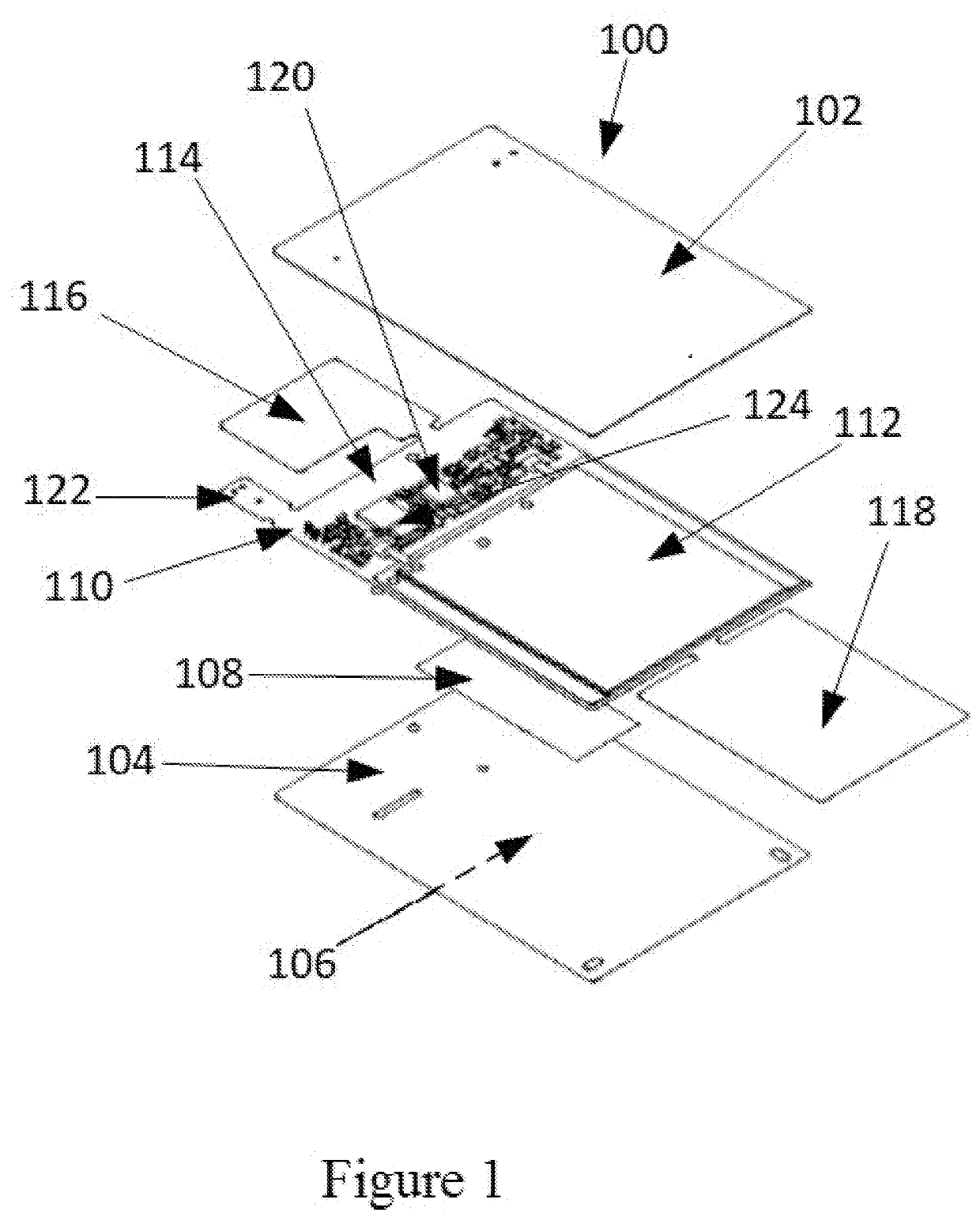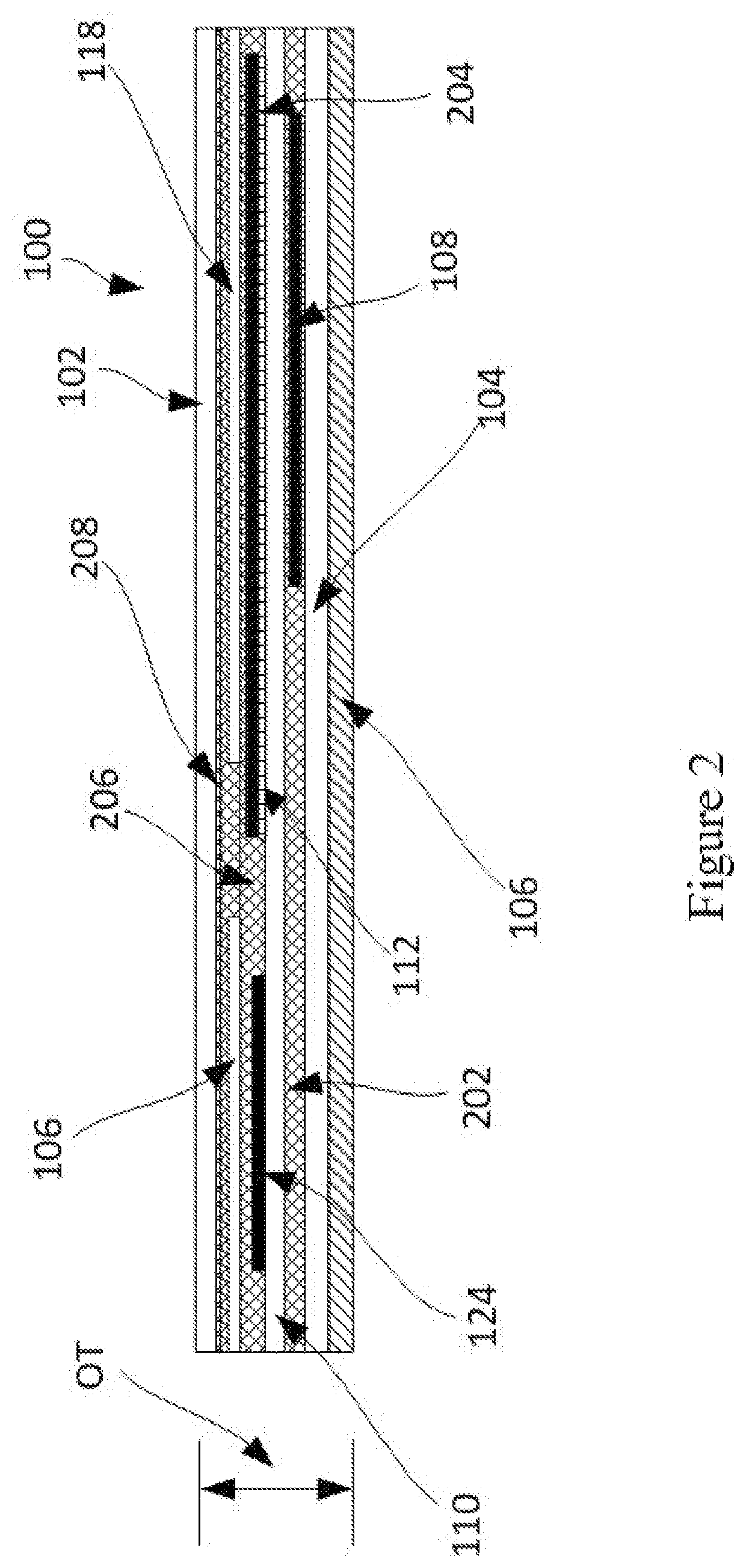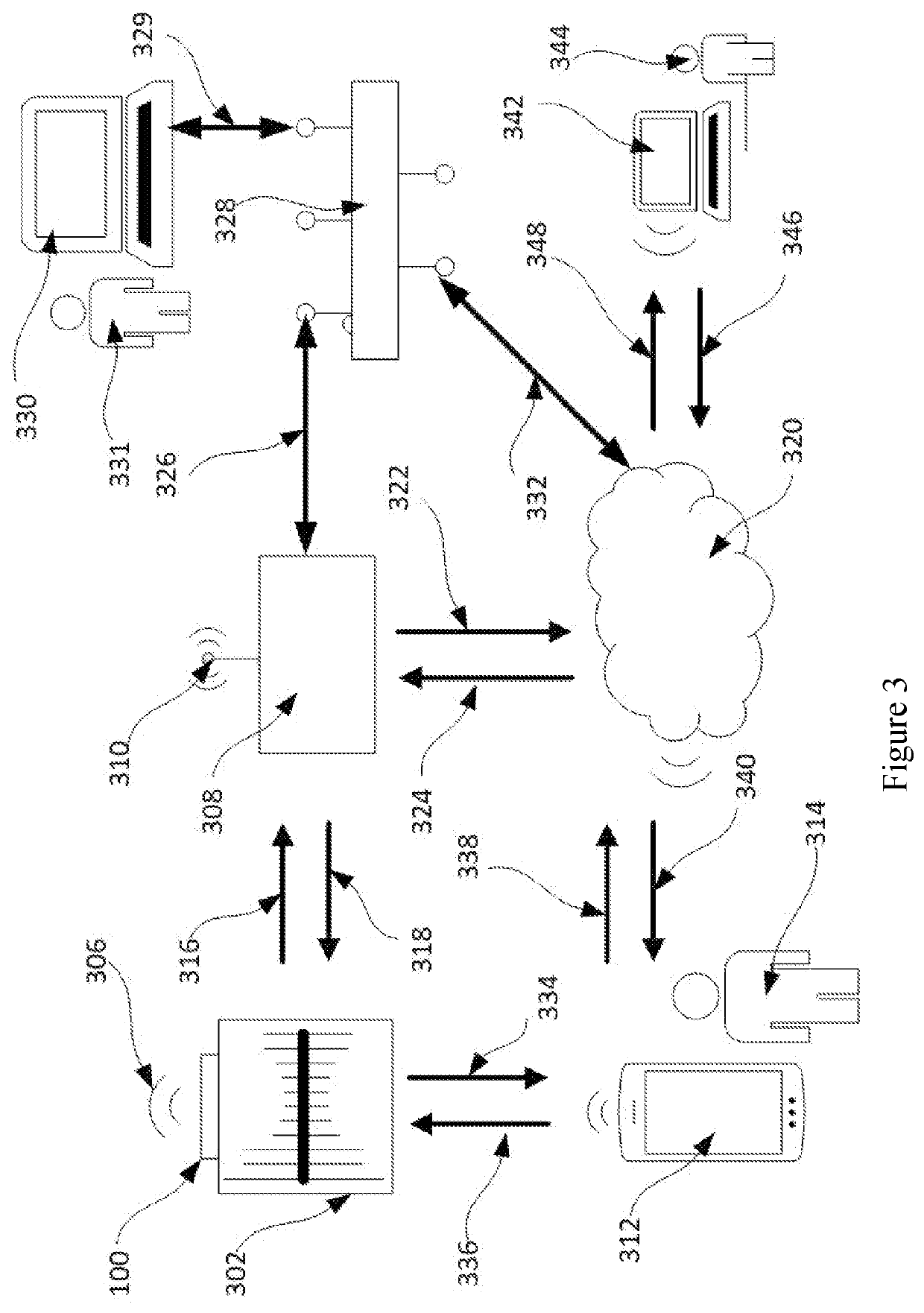System and method for sensing vibrations in equipment
a technology of vibration sensing and equipment, applied in the field of system and method for sensing vibration in equipment, can solve the problems of lack of detail information, erroneous measurement, indirect measurement techniques that are not intrusive,
- Summary
- Abstract
- Description
- Claims
- Application Information
AI Technical Summary
Benefits of technology
Problems solved by technology
Method used
Image
Examples
Embodiment Construction
[0019]The invention described here combines multiple sensors in a small, unobtrusive and slight form factor package that is easily and non-intrusively applied to functional structures in order to sense, record, capture and transmit information of said structures to edge devices, control systems, databases, machine learning algorithms and other processes and functions that can benefit from said information.
[0020]Objects of the invention include is its multi-functionality, its low profile and its ease of application and use. These factors combine to create a novel, rapidly deployable, ubiquitous sensor system and / or network that has utility in the fields of sports, medicine, defense, oil-and-gas, aerospace, automotive, industrial processes, maintenance, health-monitoring, controls and many more.
[0021]FIG. 1 is an exploded view of the sensor, according to an illustrative embodiment. The sensor system 100 can be entirely encapsulated between top layer 102 and bottom layer 104. Top layer...
PUM
 Login to View More
Login to View More Abstract
Description
Claims
Application Information
 Login to View More
Login to View More - R&D
- Intellectual Property
- Life Sciences
- Materials
- Tech Scout
- Unparalleled Data Quality
- Higher Quality Content
- 60% Fewer Hallucinations
Browse by: Latest US Patents, China's latest patents, Technical Efficacy Thesaurus, Application Domain, Technology Topic, Popular Technical Reports.
© 2025 PatSnap. All rights reserved.Legal|Privacy policy|Modern Slavery Act Transparency Statement|Sitemap|About US| Contact US: help@patsnap.com



